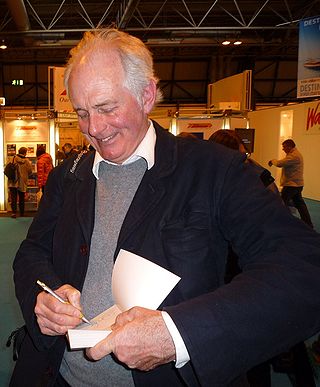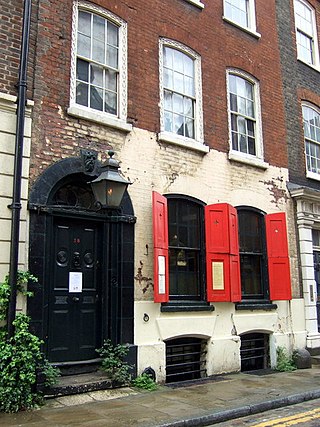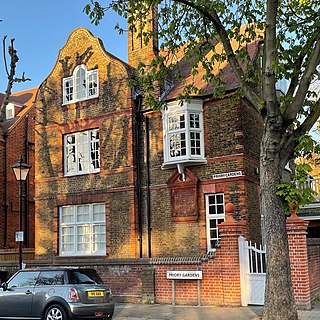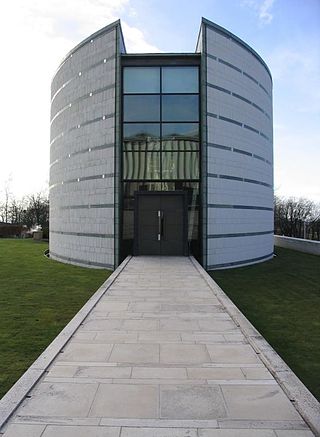
English Heritage is a charity that manages over 400 historic monuments, buildings and places. These include prehistoric sites, medieval castles, Roman forts and country houses.

In the United Kingdom a listed building is a structure of particular architectural and/or historic interest deserving of special protection. Such buildings are placed on one of the four statutory lists maintained by Historic England in England, Historic Environment Scotland in Scotland, Cadw in Wales, and the Northern Ireland Environment Agency in Northern Ireland. The term has also been used in the Republic of Ireland, where buildings are protected under the Planning and Development Act 2000, although the statutory term in Ireland is "protected structure".

Cragside is a Victorian country house near the town of Rothbury in Northumberland, England. It was the home of William Armstrong, 1st Baron Armstrong, founder of the Armstrong Whitworth armaments firm. An industrial magnate, scientist, philanthropist and inventor of the hydraulic crane and the Armstrong gun, Armstrong also displayed his inventiveness in the domestic sphere, making Cragside the first house in the world to be lit using hydroelectric power. The estate was technologically advanced; the architect of the house, Richard Norman Shaw, wrote that it was equipped with "wonderful hydraulic machines that do all sorts of things". In the grounds, Armstrong built dams and lakes to power a sawmill, a water-powered laundry, early versions of a dishwasher and a dumb waiter, a hydraulic lift and a hydroelectric rotisserie. In 1887, Armstrong was raised to the peerage, the first engineer or scientist to be ennobled, and became Baron Armstrong of Cragside.

Spitalfields is a district in the East End of London and within the London Borough of Tower Hamlets. The area is formed around Commercial Street and includes the locale around Brick Lane, Christ Church, Toynbee Hall and Commercial Tavern. It has several markets, including Spitalfields Market, the historic Old Spitalfields Market, Brick Lane Market and Petticoat Lane Market. It was part of the ancient parish of Stepney in the county of Middlesex and was split off as a separate parish in 1729. Just outside the City of London, the parish became part of the Metropolitan Board of Works area in 1855 as part of the Whitechapel District. It formed part of the County of London from 1889 and was part of the Metropolitan Borough of Stepney from 1900. It was abolished as a civil parish in 1921.

Tyntesfield is a Victorian Gothic Revival house and estate near Wraxall, North Somerset, England. The house is a Grade I listed building named after the Tynte baronets, who had owned estates in the area since about 1500. The location was formerly that of a 16th-century hunting lodge, which was used as a farmhouse until the early 19th century. In the 1830s a Georgian mansion was built on the site, which was bought by English businessman William Gibbs, whose huge fortune came from guano used as fertilizer. In the 1860s Gibbs had the house significantly expanded and remodelled; a chapel was added in the 1870s. The Gibbs family owned the house until the death of Richard Gibbs in 2001.

Historic preservation (US), built heritage preservation or built heritage conservation (UK), is an endeavor that seeks to preserve, conserve and protect buildings, objects, landscapes or other artifacts of historical significance. It is a philosophical concept that became popular in the twentieth century, which maintains that cities as products of centuries’ development should be obligated to protect their patrimonial legacy. The term refers specifically to the preservation of the built environment, and not to preservation of, for example, primeval forests or wilderness.

An English country house is a large house or mansion in the English countryside. Such houses were often owned by individuals who also owned a town house. This allowed them to spend time in the country and in the city—hence, for these people, the term distinguished between town and country. However, the term also encompasses houses that were, and often still are, the full-time residence for the landed gentry who ruled rural Britain until the Reform Act 1832. Frequently, the formal business of the counties was transacted in these country houses, having functional antecedents in manor houses.

Christ Church Spitalfields is an Anglican church built between 1714 and 1729 to a design by Nicholas Hawksmoor. On Commercial Street in the East End and in today's Central London it is in the London Borough of Tower Hamlets, on its western border facing the City of London, it was one of the first of the so-called "Commissioners' Churches" built for the Commission for Building Fifty New Churches, which had been established by an Act of Parliament in 1711.

Daniel Gordon Raffan Cruickshank is a British art historian and BBC television presenter, with a special interest in the history of architecture.

Hardwick Hall in Derbyshire is an architecturally significant country house from the Elizabethan era, a leading example of the Elizabethan prodigy house. Built between 1590 and 1597 for Bess of Hardwick, it was designed by the architect Robert Smythson, an exponent of the Renaissance style. Hardwick Hall is one of the earliest examples of the English interpretation of this style, which came into fashion having slowly spread from Florence. Its arrival in Britain coincided with the period when it was no longer necessary or legal to fortify a domestic dwelling.

Dennis Severs' House in Folgate Street, London is a "still-life drama" created by Dennis Severs, who owned and lived in it until his death, as a "historical imagination" of what life would have been like inside for a family of Huguenot silk weavers. It is a Grade II listed Georgian terraced house in Spitalfields in the East End, Central London, England. From 1979 to 1999 it was lived in by Dennis Severs, who gradually recreated the rooms as a time capsule in the style of former centuries. Severs' friend Dan Cruickshank said: "It was never meant to be an accurate historical creation of a specific moment – it was an evocation of a world. It was essentially a theatre set."

The Victorian Society is a UK amenity society and membership organisation that campaigns to preserve and promote interest in Victorian and Edwardian architecture and heritage built between 1837 and 1914 in England and Wales. It is a registered charity.

Wothorpe is a village and civil parish in the Peterborough unitary authority of Cambridgeshire, England. It is in the far north-west of the district, and to the south of Stamford. The parish borders Northamptonshire to the west.
Mark Baker is an architectural historian, and an author of several books on country houses, estates and their families. Baker has contributed to several television series and programmes. He became a Welsh Conservative Party councillor for Gele in May 2017.

Mark Girouard was a British architectural historian. He was an authority on the country house, and Elizabethan and Victorian architecture.
The Architectural Heritage Fund (AHF) is a registered charity founded in 1976 to promote the conservation and re-use of historic buildings across the United Kingdom. As the leading social investor in the UK for over 40 years, it provides communities with advice, grants and loans to help them find enterprising and sustainable ways to revitalise the old buildings they love, particularly in economically disadvantaged areas.

Sir Richard Cornelius MacCormac CBE, PPRIBA, FRSA, RA, was a modernist English architect and the founder of MJP Architects.
Marsh Charitable Trust, also known as Marsh Christian Trust, is a national charity in the United Kingdom, based in London. It is a registered charity under English law, and was established in 1981 by Brian Marsh, the current Chairman. Marsh was appointed an OBE for services to business and charity in the 2005 New Year Honours.



















